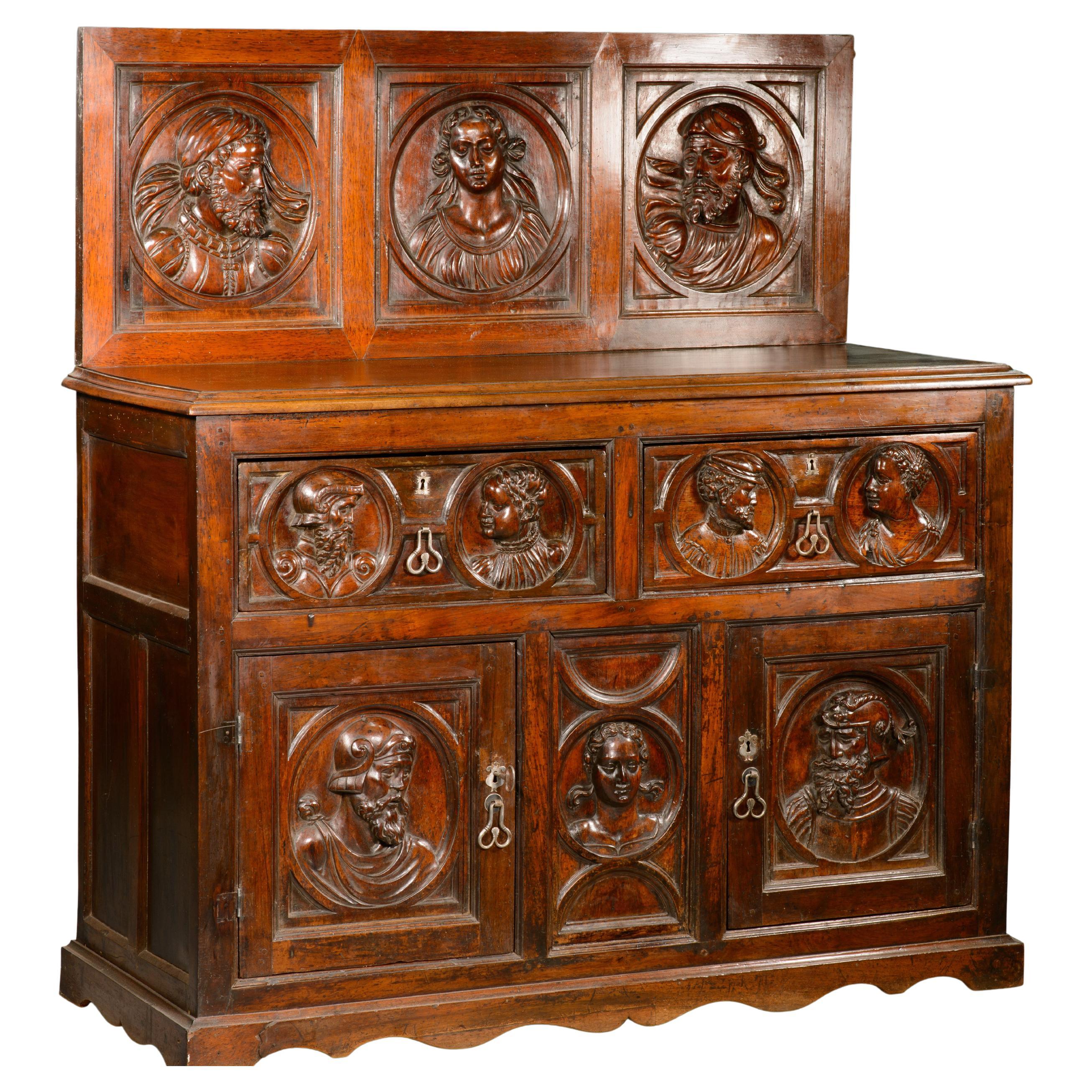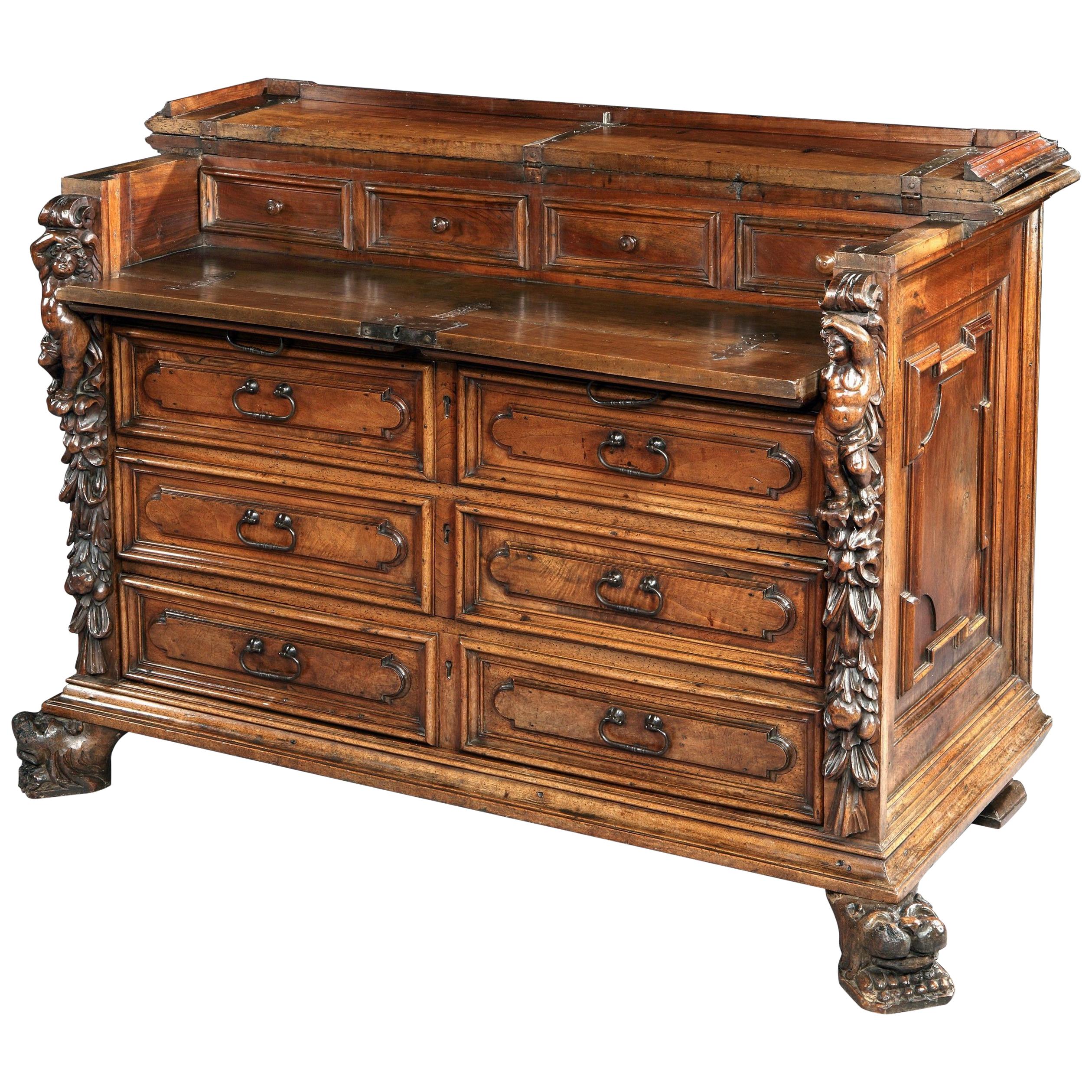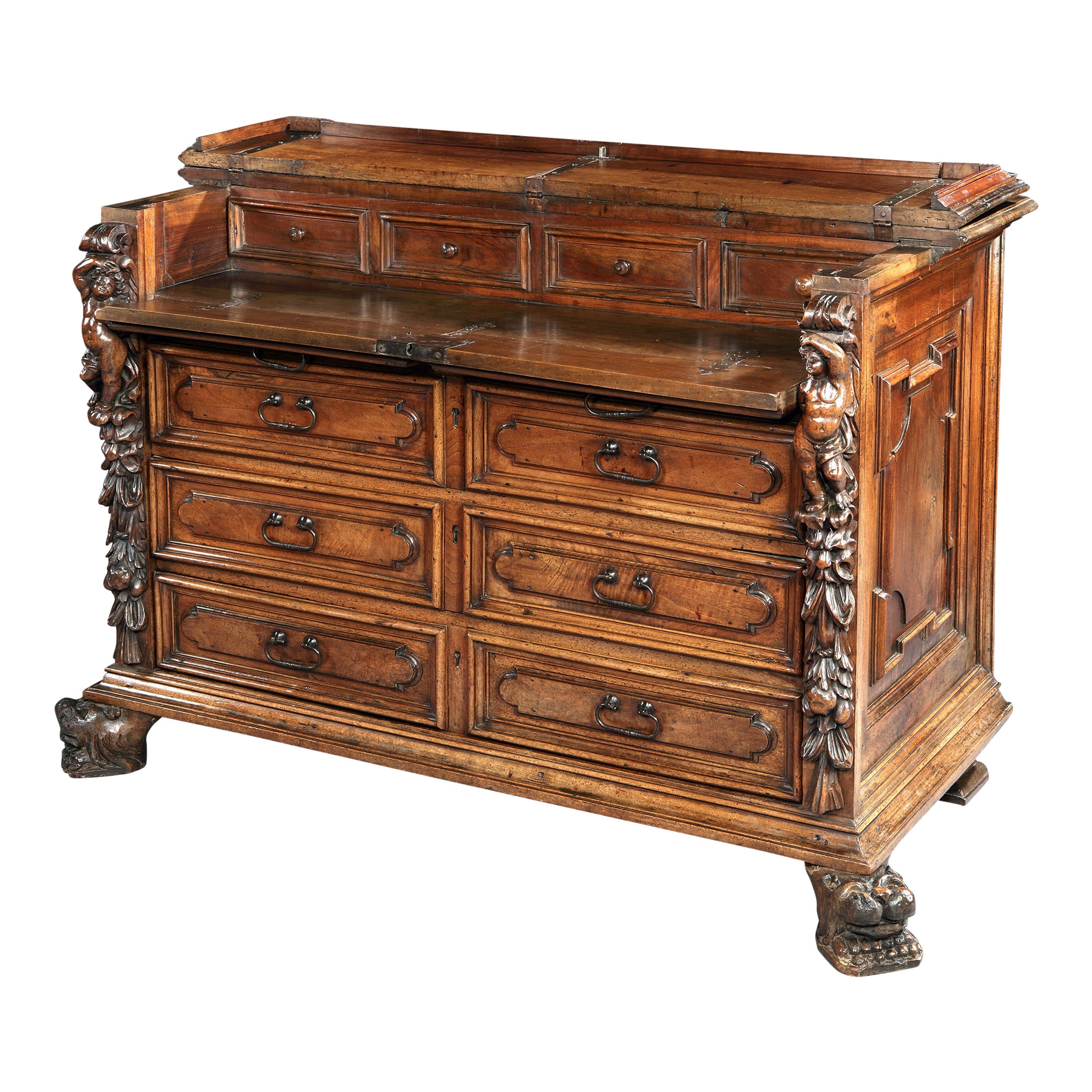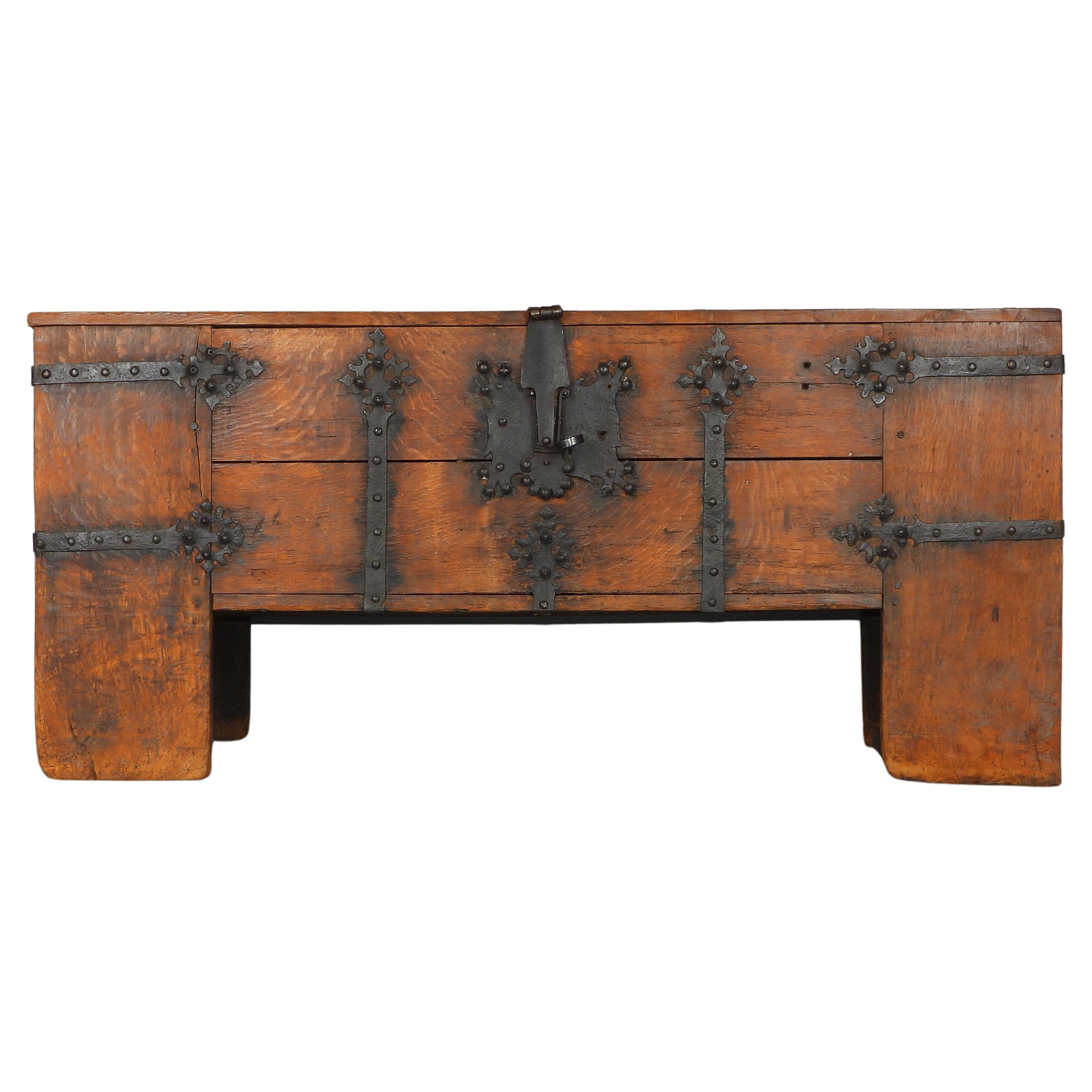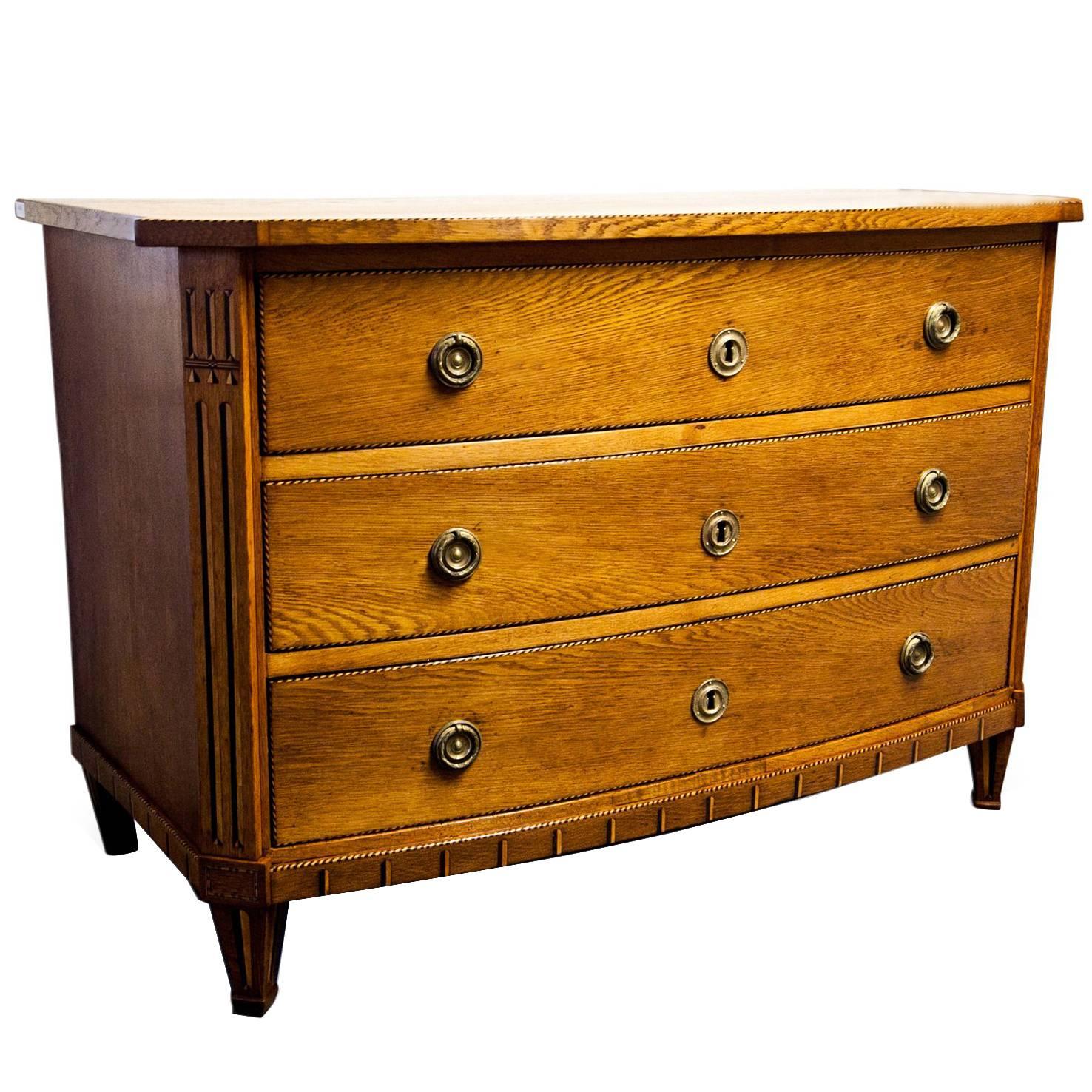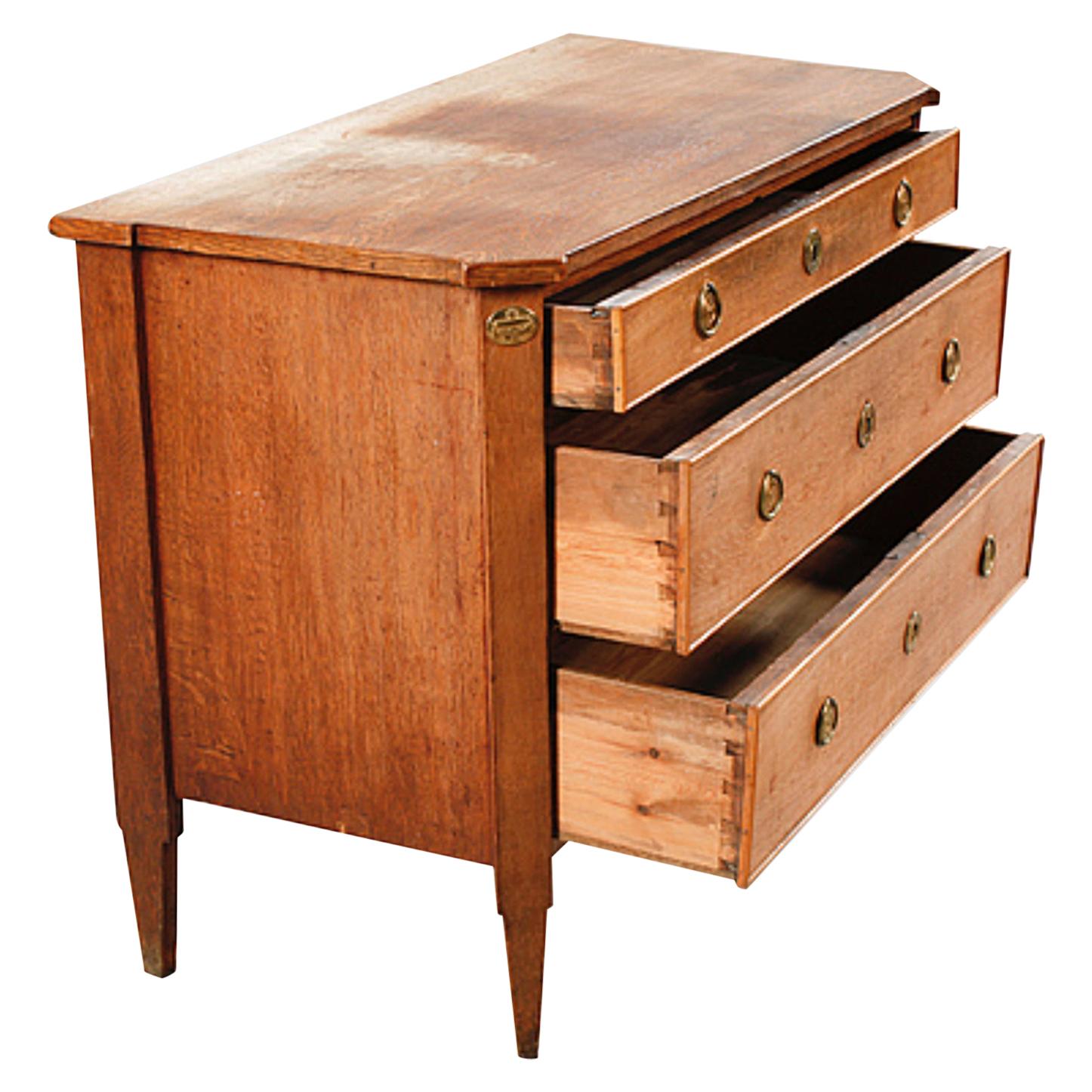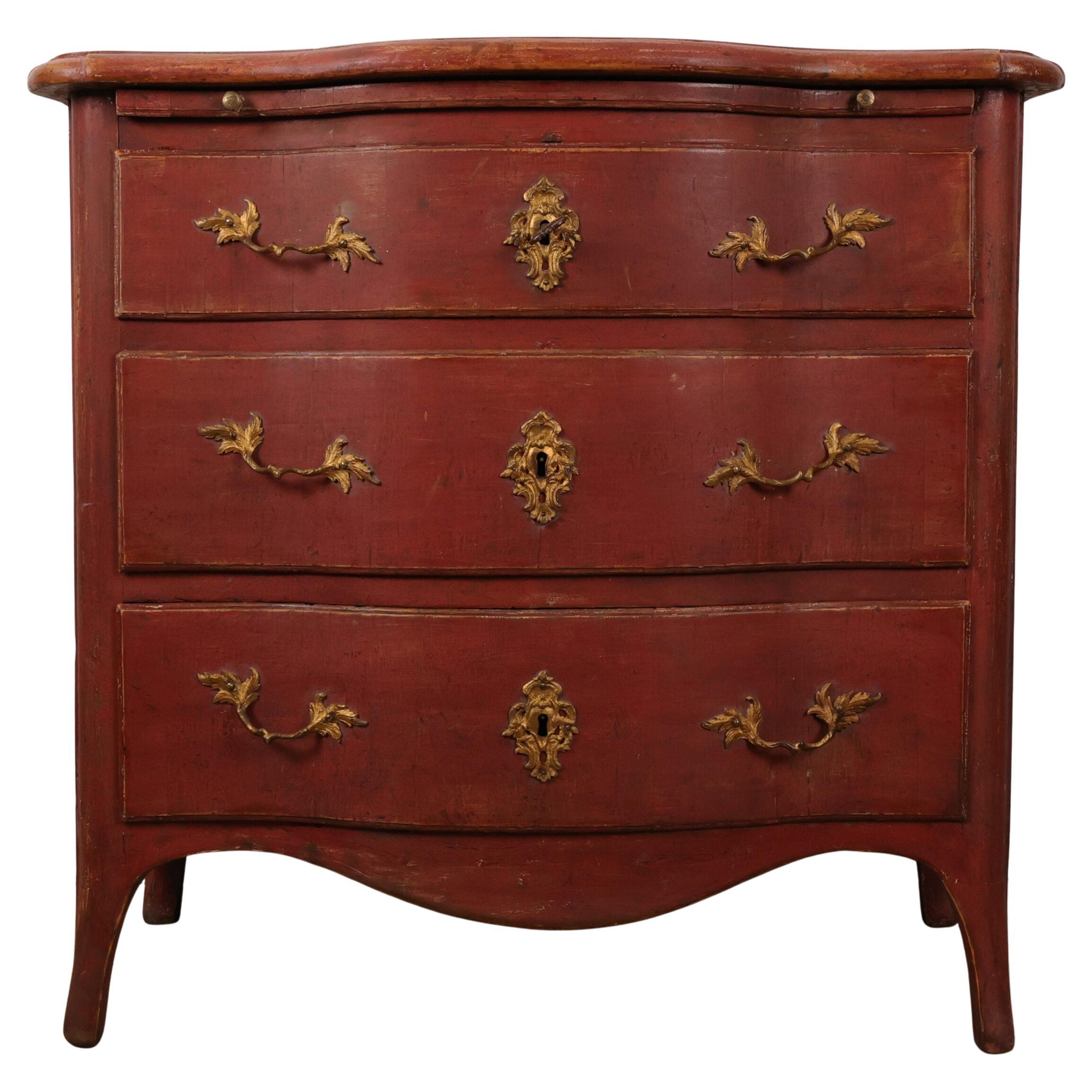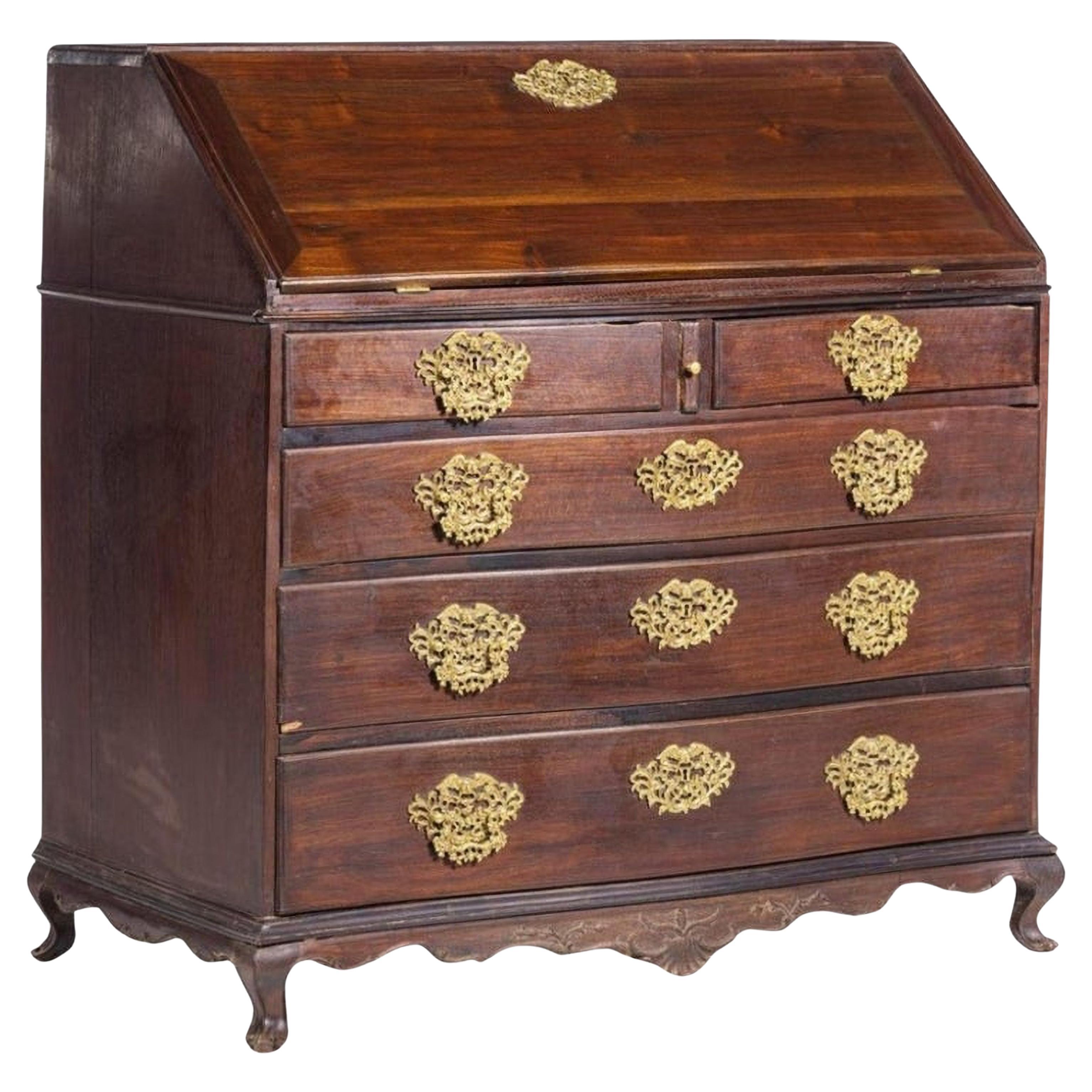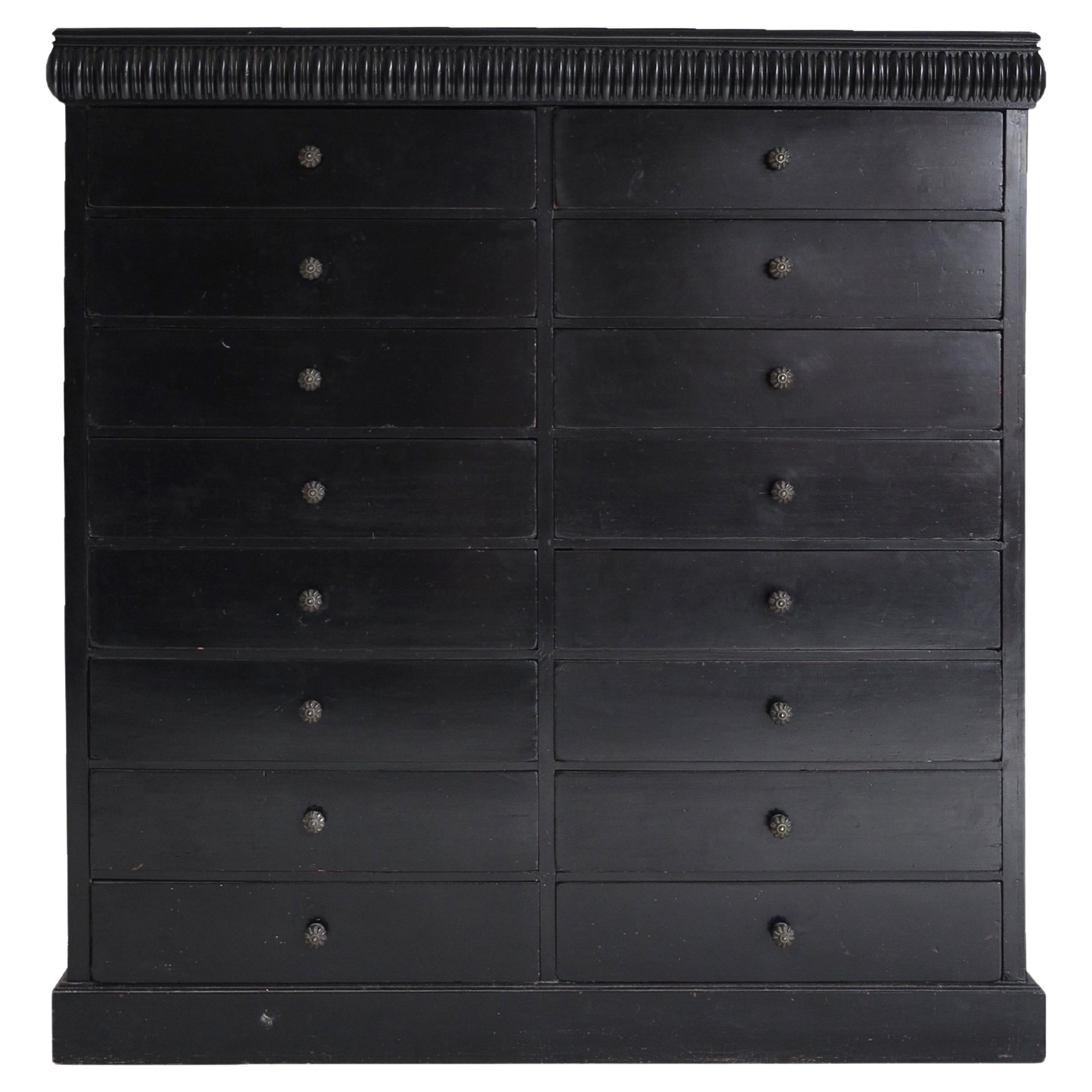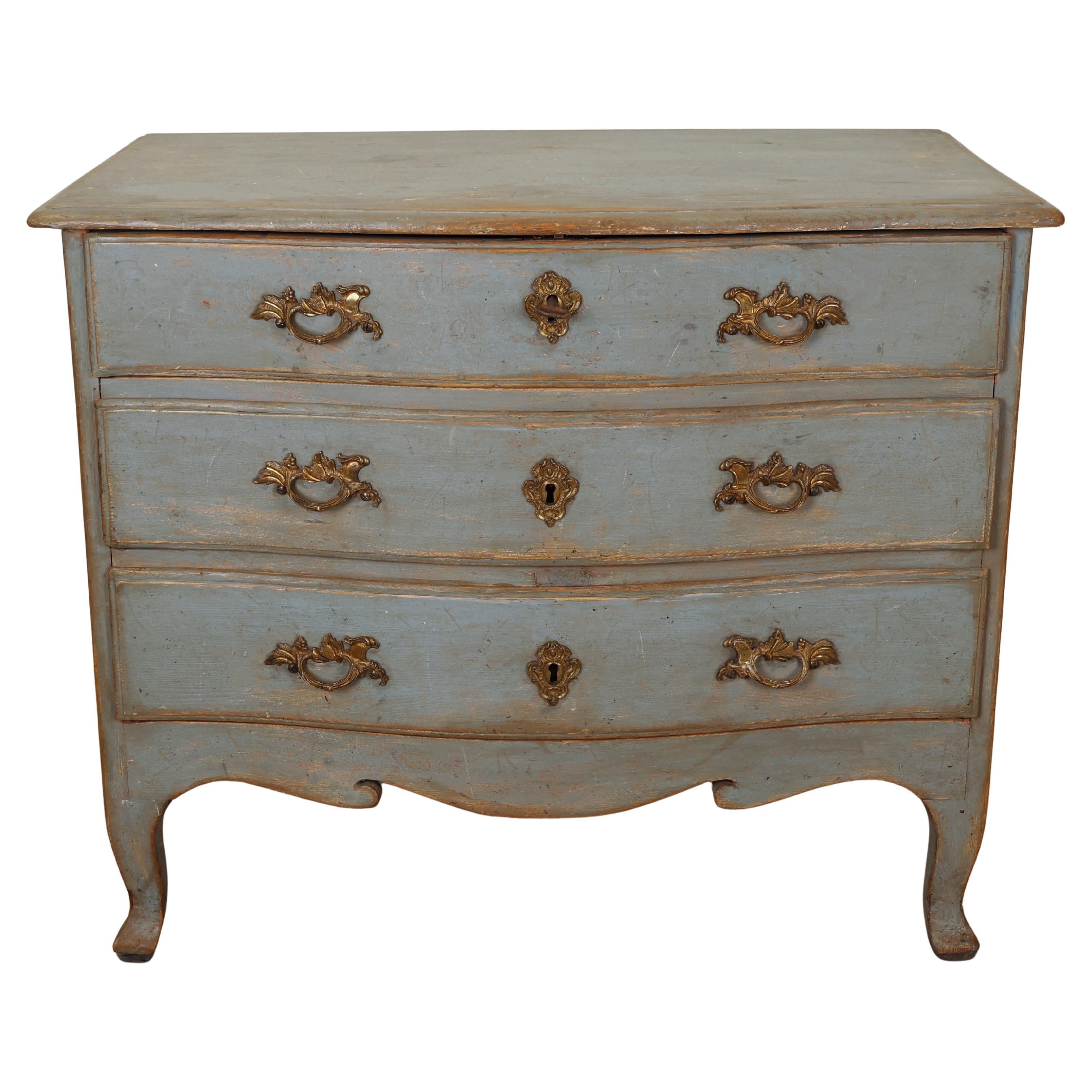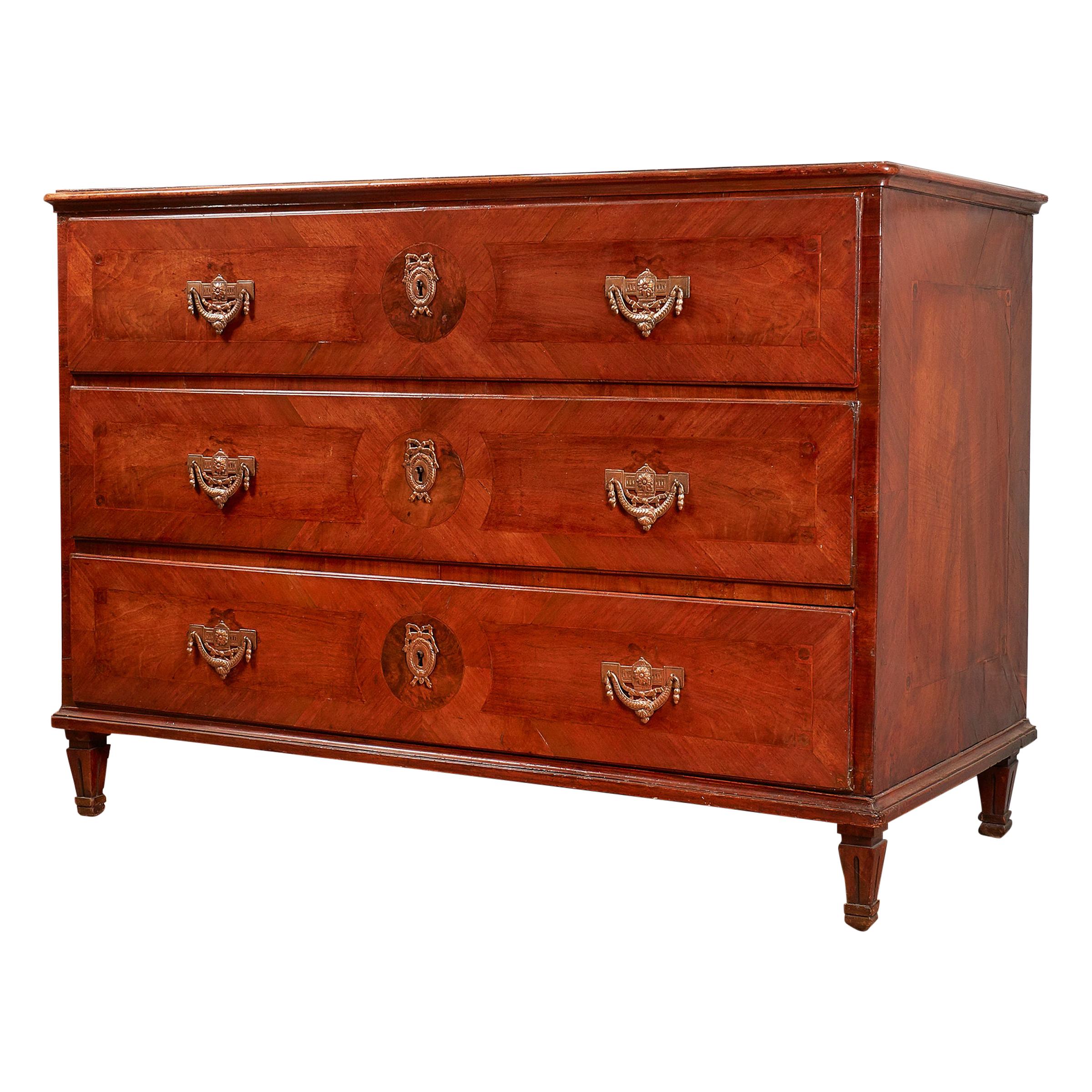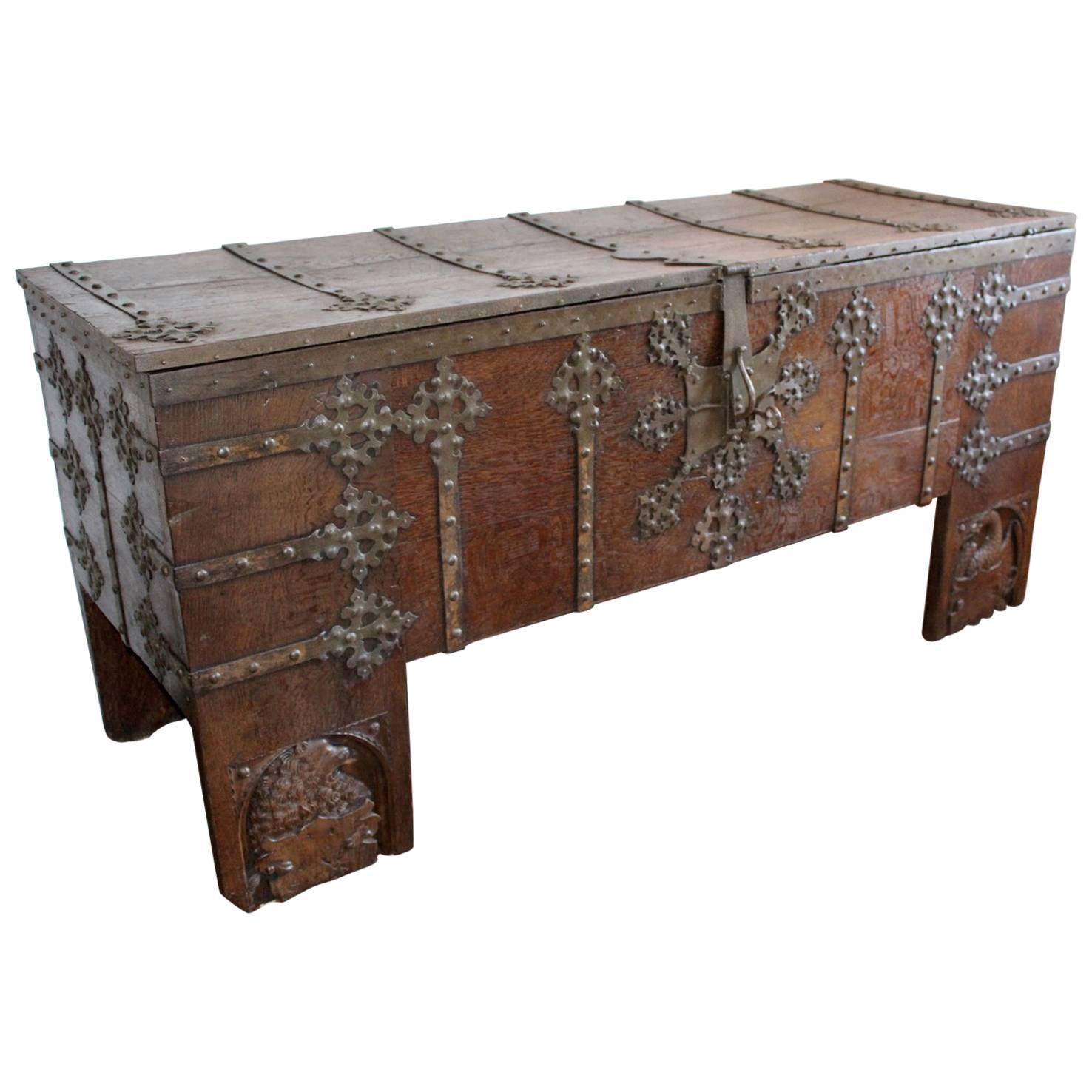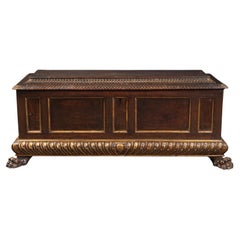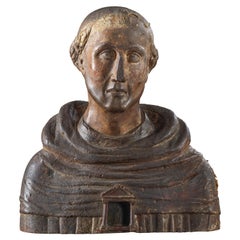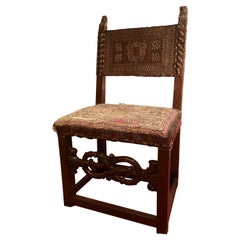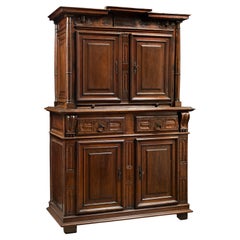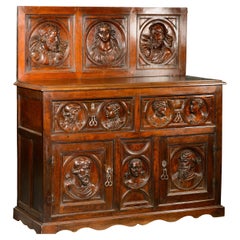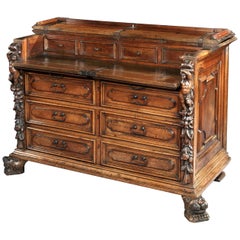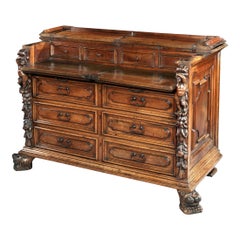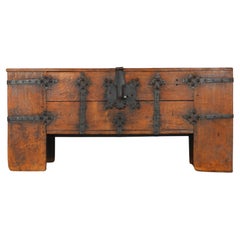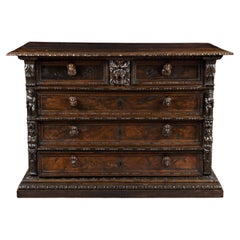
Late 16th Century Genoan Bambocci Chest of Drawers
View Similar Items
Want more images or videos?
Request additional images or videos from the seller
1 of 5
Late 16th Century Genoan Bambocci Chest of Drawers
$53,815.44List Price
About the Item
- Dimensions:Height: 40.75 in (103.5 cm)Width: 58.67 in (149 cm)Depth: 28.75 in (73 cm)
- Style:Renaissance (Of the Period)
- Materials and Techniques:
- Place of Origin:
- Period:
- Date of Manufacture:Late 16th Century
- Condition:Wear consistent with age and use. Minor losses. Minor fading.
- Seller Location:Saint-Ouen, FR
- Reference Number:1stDibs: LU3115327368222
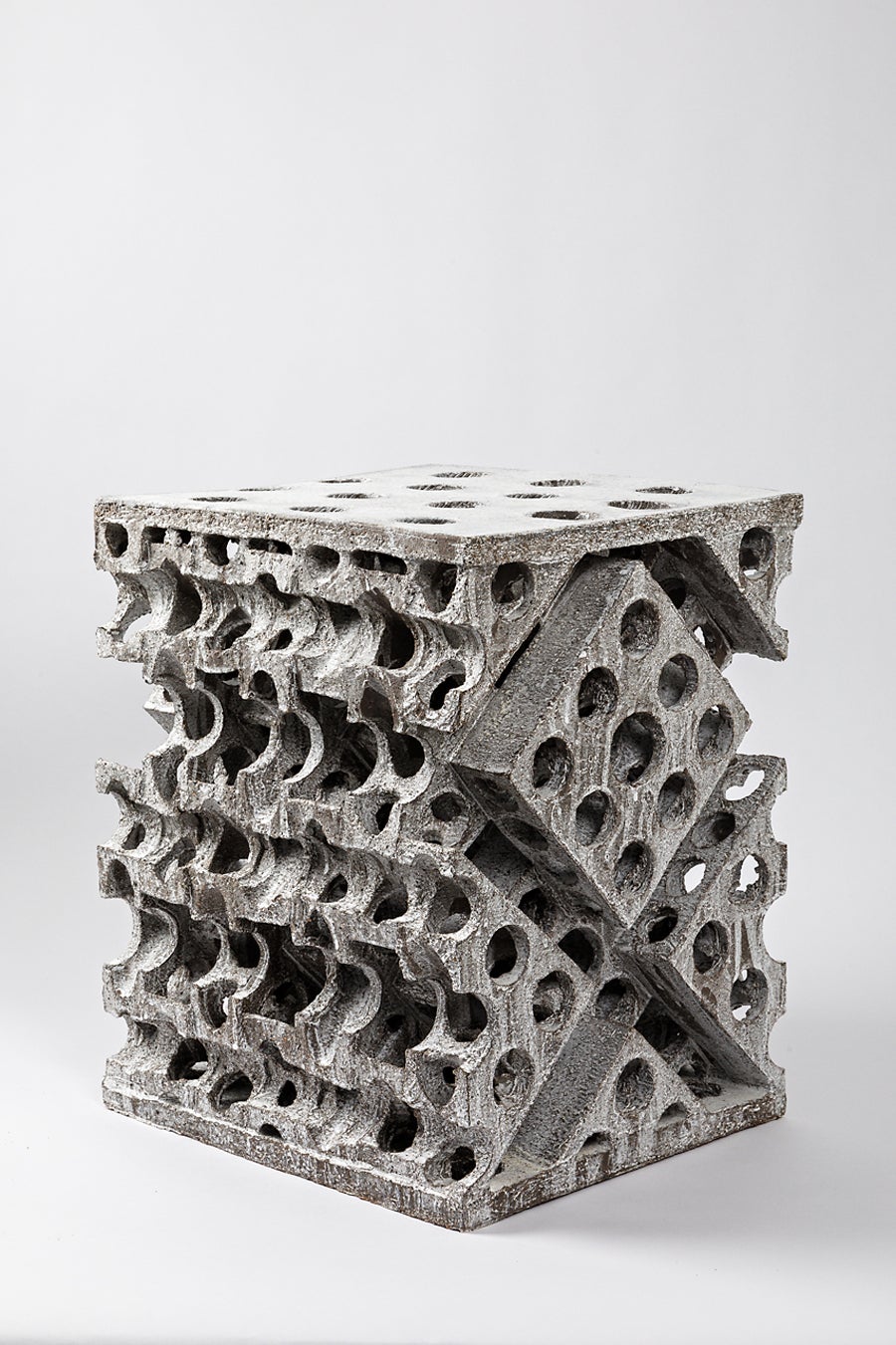
About the Seller
5.0
Vetted Professional Seller
Every seller passes strict standards for authenticity and reliability
Established in 2016
1stDibs seller since 2017
192 sales on 1stDibs
Typical response time: 1 hour
Authenticity Guarantee
In the unlikely event there’s an issue with an item’s authenticity, contact us within 1 year for a full refund. DetailsMoney-Back Guarantee
If your item is not as described, is damaged in transit, or does not arrive, contact us within 7 days for a full refund. Details24-Hour Cancellation
You have a 24-hour grace period in which to reconsider your purchase, with no questions asked.Vetted Professional Sellers
Our world-class sellers must adhere to strict standards for service and quality, maintaining the integrity of our listings.Price-Match Guarantee
If you find that a seller listed the same item for a lower price elsewhere, we’ll match it.Trusted Global Delivery
Our best-in-class carrier network provides specialized shipping options worldwide, including custom delivery.More From This Seller
View AllLarge 16th Century Tuscan Wedding Chest Called "Cassone"
Located in Saint-Ouen, FR
Large wedding chest in tinted and gilded walnut, the lid animated with a frieze of pearls, the sides with compartments, the belt decorated with gadroons. It rests on four claw feets.
Category
Antique 16th Century Italian Renaissance Blanket Chests
Materials
Walnut
16th Century Polychrome Reliquary of a Monk
Located in Saint-Ouen, FR
The monk is depicted with an oval face, marked with high and strong cheekbones, sunken cheeks, strong jawbones and a cleft chin. His almond shaped eyes are opened under very strong a...
Category
Antique 16th Century Italian Renaissance Busts
Materials
Wood
16th Century Spanish Walnut Chair
Located in Saint-Ouen, FR
This walnut chair stands on four square-section feet linked by four crossbars. The front spacer is carved as an intertwined branch. The backrest’s jambs are adorned with leaves motif...
Category
Antique 16th Century Spanish Renaissance Chairs
Materials
Leather, Fabric, Walnut
16th Century Renaissance Two-Bodied Cabinet
Located in Saint-Ouen, FR
Former collection Altounian
At the beginning of the reign of Henri II (1547-1559) the furniture’s ornamentation evolves. The few medieval motifs that were still used are eventually relinquished. Furniture becomes more sober showcasing moulded panels and perfect architecture. Cabinet-makers use ornaments such as curved fluted or plain columns, feather quills, roses or winged putti heads. High-relief carving becomes more scarce and compositions lighter. To that end cabinet-makers draw inspiration from Fontainebleau motifs filtering them and adapting them to French taste.
During this period cabinet-makers turn into a kind of architects. Indeed the architectural balance of furniture is the centre of their concerns. The study of Antic formulas is then a necessity. From this care given to proportions appear refined cabinets with pure lines.
This style is characteristic of the reign of Henri II and disappears soon after under the regency of Catherine de Medici (1560-1574) when an abundance of high and low-relief ornaments comes back on furnitures.
This two-bodies cabinet...
Category
Antique 16th Century French Renaissance Cabinets
Materials
Walnut
16th Century French Carved Renaissance Cabinet
Located in Saint-Ouen, FR
Rare carved Renaissance cabinet
Period : 2nd half 16th century, ca. 1570
Origin : France, Burgundy or Languedoc
This cabinet embody the produ...
Category
Antique 16th Century French Renaissance Cabinets
Materials
Walnut
16th Century Southern Germany Wood Figure of Saint Roch
Located in Saint-Ouen, FR
Easily recognizable with his gesture of showing pest effect on his thigh this pilgrim saint is accompanied by an angel curing him. The quality of the wood is noteworthy.
Bibliography
Louis Réau, Iconographie de l’Art Chrétien...
Category
Antique 16th Century German Renaissance Figurative Sculptures
Materials
Wood
You May Also Like
Chest of drawers. Carved wood. 16th century.
Located in Madrid, ES
Chest of drawers. Carved wood. 16th century. Restorations.
Chest of drawers with a carved wooden front in its own color, featuring two drawers with metal handles and lock escutcheo...
Category
Antique 16th Century European Renaissance Commodes and Chests of Drawers
Materials
Other
Cassettone Bureau-Chest Bambocci 16century Italian Renaissance Walnut Lombardy
Located in BUNGAY, SUFFOLK
AN EXCEPTIONAL MUSEUM QUALITY, ITALIAN, RENAISANCE WALNUT CASSETTONE WITH A FITTED BUREAU IN THE UPPER PART & EXCEPTIONAL BAMBOCCI CARVING, LOMBARDY
- This exceptionally rare, museum quality, piece of early furniture was conceived and crafted as an artwork of the finest quality of its time. Throughout time it has been a luxurious, statement piece which has protected it, and fortunately it has survived in virtually, original condition.
- This magnificent cassettone exudes the character and quality of the finest, late-Renaissance furniture.
Northern Italian Renaissance furniture often had the sides, legs or angles, 'a Bambocci', incorporating carved figures which were considered unique sculptures in their own right.
- The putti on this cassettone are beautifully carved and of sculptural quality. Each angel has one arm raised to heaven, a poignant touch.
- The lion’s paw feet are a classical feature and make a great statement.
- This cassettone was conceived to have visual impact through the quality of the carving, as well as being very practical with the writing compartment fitted in the top part.
- It has survived in very original condition with a few small repairs and losses, and the colour and patina are warm and lustrous.
- This cassettone is illustrated Illustrated in C. Alberici, Il Mobile Lombardo, Milan, 1969, p. 45, one of the seminal works on Lombardy furniture, and has been in two renowned collections.
The hinged top in two sections faced with a solid moulded edge. The front part has a fall front and opens to reveal a writing compartment. The fall front retains its original lock and is concealed with a false drawer which is above three drawers. All with moulded panels, escutcheons and retaining the original iron handles. The front ends have exceptional, bambocci, carved putti raising their arms to heaven above trailing foliage. Standing on magnificent lion's-head carved feet. The sides are panelled. Exceptional original colour and patina.
Literature : Illustrated in C. Alberici, Il Mobile Lombardo, Milan, 1969, p. 45. A Gonzalez-Palacois, Il mobile in Liguria, Genova, 1996 illustrates related pieces
Measures: Length 147 ½ cm. 58 in, height 104 cm. 41 in, depth 75 cm. 29½ in,
Provenance: Coll. Private Azzate The Collection of Sandro and Lidia Orsi, Ca’ Mera, Varese. Regarded as one of the most beautiful homes in Lombardy, Ca’ Mera, the country house of Sandro and Lidia Orsi was filled with beautiful objects from many different epochs. A renowned antiquarian from Milan, over his lifetime Sandro and his wife Lidia revived the Renaissance and Baroque character of the house and instilled their own unique vision into the interiors, which culminated with the creation of a Kunst – or Wunderkammer. “I have never seen such an example of poetical taste”, Sir John Pope...
Category
Antique 16th Century Italian Renaissance Commodes and Chests of Drawers
Materials
Walnut
Cassettone or Bureau-Chest, Late 16th Century, Italian Renaissance, Walnut
Located in BUNGAY, SUFFOLK
Exceptional museum quality, Italian, renaissance walnut cassettone with fitted bureau in the upper part & exceptional Bambocci carving, Lombardy.
This magnificent cassettone exudes the character and quality of the finest, late-Renaissance furniture. Late 16th century, Northern Italian furniture often had the sides, legs or angles, 'a Bambocci', incorporating carved figures which were unique sculptures in their own right. The putti on this cassettone are beautifully carved and of sculptural quality. Each angel has one arm raised to heaven, a poignant touch. Showing customary signs of wear from time, the lion’s paw feet make a great statement. This cassettone was conceived to have visual impact through the quality of the carving, as well as being very practical with the writing compartment fitted in the top part. It has survived in very original condition with a few small repairs and losses, and the color and patina are warm and lustrous. This cassettone was illustrated in one of the seminal works on Lombardy furniture in the 1969 and has been in two renowned collections.
The hinged top in two sections faced with a solid moulded edge. The front part has a fall front and opens to reveal a writing compartment. The fall front retains its original lock and is concealed with a false drawer which is above three drawers. All with moulded panels, escutcheons and retaining the original iron handles. The front ends have exceptional, bambocci, carved putti raising their arms to heaven above trailing foliage. Standing on magnificent lion...
Category
Antique 16th Century Italian Baroque Furniture
Materials
Walnut
Rare Late Medieval 16th Century German Wrought Iron Oak Chest
Located in grand Lancy, CH
A very impressive Westphalian Gothic chest or ‚Stollentruhe’, Westphalia, Germany, circa 1500-1550. Wrought iron mounted oak, partially carved. The monumental rectangular standing ch...
Category
Antique 16th Century German Commodes and Chests of Drawers
Materials
Iron
Chest of Drawers, Late 18th Century
Located in Greding, DE
Three-drawer chest of drawers with slightly curved front, standing on tapered feet. The slanted corners as well as the skirt and the edges are decorated with filet marquetry.
Category
Antique Late 18th Century European Neoclassical Commodes and Chests of D...
Materials
Oak
Late Gustavian Chest of Drawers from 19th Century
Located in Barcelona, ES
A late Gustavian solid oak chest of drawers from 19th century.
Formation: Three drawers.
Measurements: Length 108, width 53, height 84 cm.
Condition: Stains. Partly worming. Renov...
Category
Antique Early 19th Century Swedish Gustavian Commodes and Chests of Drawers
Materials
Oak
Recently Viewed
View AllMore Ways To Browse
16th Century Wood Chest
Florentine Chest
Florentine Drawers
Sculpture Renaissance Lion
Italian Florentine Chest
Italian Renaissance Chest Of Drawers
Renaissance Commode Italian
Florentine Commode
A Bambocci
Vintage Campaign Furniture
Italy Wood Inlay
Carved Wood Pull
Mahogany Chest On Chest
French Chest Marble Top
Antique Commode With Marble Top
Vintage Drawer Handles
Wood Veneer Chest
Italian Antique Chest
